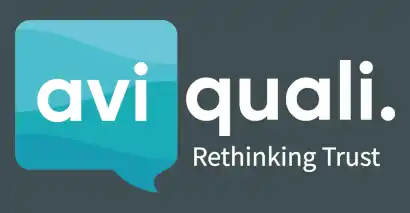Where are your website visitors queuing?
Another crucial factor is how well the virtual waiting room system you choose integrates with each and every platform you utilise.
The most popular platform for almost all of our Internet use now is via mobile phone, so it's vital that mobile phone visitors receive a responsive waiting room experience that works on their screen size. That said, it would be remiss of any organisation not to provide cover for all eventualities. That means having a virtual waiting room system that works beautifully and prevents website crashes and app crasshes on mobile, tablet, laptop, and desktop, whichever browser or website platform - which is what Queue-Fair virtual waiting rooms do.
- Choose a system that keeps your visitor’s place in the queue even if they close down the webpage, app, or turn off their phone.
- Is your virtual waiting room system mobile-friendly, mobile-specific, and will it work on all mobile browsers?
- Can it support the code or systems your existing platform functions on?
Another sensible business consideration to make is which parts of your website or app need specific protection with a virtual waiting room service? You may want to allow online traffic to flow as usual over the majority of your site, only protecting the pages that are the most vulnerable to being overwhelmed.
This can become an issue with many eCommerce facilities, and indeed with ticketing events where a vendor wants their other events to be accessible as usual, without website crashes. It’s also an excellent opportunity to let a person view what else on offer while they’re patiently waiting in the virtual waiting room to make their booking or buy a product.
How are your website visitors queuing?
Customer experience goes hand-in-hand with customer confidence and building belief in your brand. In today’s society, we are quick to create judgements and slow to forgive—and why not? There are so many alternatives to the systems we choose to engage with, and website crashes are not good for your brand, as well as your systems.
Those alternatives are your direct competition - do you really want to hand over your customers just because your systems are failing you?
Queuing psychology shows us that it’s not necessarily the visitor queue itself that can create the most frustration, but not knowing what's happening.
How we queue, or more importantly, how well we’re entertained and educated while being kept up-to-date with our progress while we wait is paramount. If we’re aware of our position in the visitor queue, and when we’re likely to be dealt with, that’s proven to be the most important factor for visitors.
Of course, we all want a seamless and immediate application, but where that’s not possible, understanding why we’re waiting in the visitor queue and for how long plays a healthy part in defeating our anxiety. Nobody appreciates being left in the dark without a clue what’s happening.
Connections dropping, hitting page redirects, or being sent back to the beginning of a sales or action funnel are the quickest ways to upset your visitors—so implement a visitor queue system that educates your visitors and allows them to feel cared for and safely placed in a fair first-come, first-served system.
What are the common issues and needs of a virtual queuing system?
There are many possible areas to cause problems for service providers, vendors, and agents. The one common denominator is that they all require protection and prevention from any foul play.
Virtual queue-jumpers skipping the line
Choosing a server-side adapter prevents attempts to skip the line by bypassing or disabling JavaScript in client-side options.
Protection against bots
Bots are another problem where server-side solutions are better equipped to protect your platform from touts and hackers—those trying to find ways to crack your system and beat genuine visitors and consumers to the front of the visitor queue.
VIP visitor access
Allowing direct access or speedier employment of your service for preferred customers is managed in your control settings. This requires the same level of safeguarding security in your virtual waiting rooms and a possible change in architecture to address bottlenecks and delivery of different queues.
Eager users logging on in advance
What do you do with an excessive amount of online traffic before an event launches? If you set up a visitor queue to hold early visitors in place, does it adhere to the fairness of setting a specific event launch schedule? At the same time, you don’t want all of that web traffic to cripple your site before your visitor queue system launches.
Creating a visitor queue that allocates a random order at the designated event start-time is a solution that fits with fairness etiquette. There are answers to every issue, and we have a helpful article on how virtual waiting rooms work for further details. Make sure your visitor queue system covers every eventuality.
The key factors to choosing your virtual queuing system
The three areas you need to incorporate are:
- Satisfaction
- Control
- Safeguarding
Visitor satisfaction
Your visitors’ trust in your business brand will slide downhill rapidly if your visitor queue system continually lets them down, and we all know that reputation is paramount when it comes to loyalty.
Protect both your servers and applications with an appropriate virtual queuing system and your customers with ongoing updates at each step of their buying/registration/alternative process.
- Fairness comes first, so utilise first-come, first-served software.
- Introduce an educational or informative customer experience during longer queue times in virtual waiting rooms to occupy your visitors and distract them from lengthy waits.
- Include a seamless, safe customer journey - custom branded to build customer confidence across each and every link.
Complete queue control
When choosing your virtual waiting room solution and queuing system, you must pick one that incorporates all the control you require over the complete visit journey, including your virtual waiting rooms.
- Monitor and analyse web traffic to spot surges to your site as a whole and each specific link, and react to them, keeping your customers online, informed, and happy in the waiting room solution.
- Build insights into the best ways to code and manage future queues and where they are best suited to link into your system.
- Adjust your in-system messaging in your virtual waiting rooms to reflect your brand voice and support style.
- Can your business deliver distractions, further promotions, or communicate special offers as part of the waiting room visit that add to your visitors’ virtual waiting room experience?
For example, Queue-Fair delivers engaging animated displays, with an estimated wait that is continually updated, an animated progress bar, and uniquely in the industry, a ticking People Ahead counter that shows each person how many people are ahead of them in the queue, ticking down one at a time in a synchronised manner across all the browsers or apps in the queue, keeping your customers engaged.
Safeguarding your system and your visitors’ experience
The main reason for any virtual waiting room technology is to stop websites crashing, losing valuable revenue for your business from associated downtime, and sales losses from each lost link visit. However, there are many ways hackers and less than credible opportunists will try to use technology to navigate your boundaries and payment process flow and skip your waiting rooms, so it's important that your virtual waiting rooms are secure too, so that they do not have the ability to do that just by visiting an unprotected link.
To protect yourself and your patient visitors, you must:
- Protect against bots and DoS attacks.
- Implement inclusion methods that prevent queue jumping on websites and mobile devices and skipping places in line when they should be waiting.
- Deliver additional security measures to prevent unwarranted access and to enhance and support consumer confidence.
The good news is that Queue-Fair includes everything you need as standard services with our vitrual waiting room technology.
You only have to browse our website to see that we cover all of the above eventualities for your digital transformation and anything else you could ever need from your virtual waiting rooms. If you’d like to dive deeper into our system's more precise methods and applications, a complete technical guide is available for anyone who'd like to read it. When people join a Queue-Fair virtual waiting room, it's as if they schedule virtual appointments for when they reach the front of the queue.
As well as a glossary of industry terms, it explains how security, queue activating and safeguard rates control your visitor ingress and output from the waiting rooms, how server-side and client-side adapters work, and which will be most appropriate for your virtual waiting rooms and visitor queue needs.
Because Queue-Fair offers the most accurate virtual waiting rooms service on the market, your server load will be rock steady, meaning you can safely have a higher queue rate than waiting rooms from other providers. That means users experience a shorter wait with our systems, leading to higher sales and a better customer experience too.
If, after you’ve drained our guide of every piece of information, you still have questions about our visitor queue systems, then our team of technical experts are always on hand and ready to help.
Get in touch, and we’ll get you on track to the safest virtual waiting rooms on the web - just join up for a free trial and we can have you up and running in minutes.































